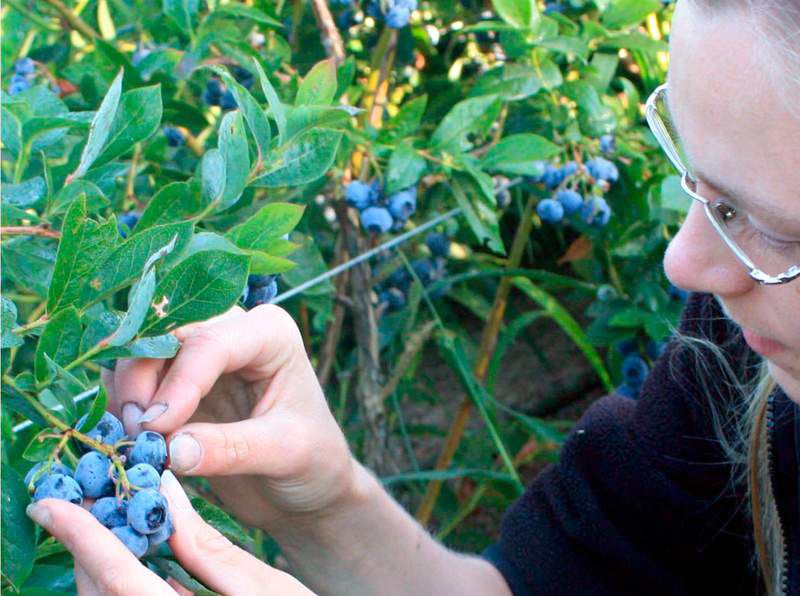Tiny fly causes big trouble for Oregon’s fruit farmers
Published 5:00 am Saturday, June 18, 2011

- This July 2010 photo shows Amanda Ohrn, a research assistant at Oregon State University, checking blueberries for signs of spotted wing drosophila in Linn County last summer. Researchers and fruit growers are worried the insect will cause severe damage to crops.
ALBANY — In one way, the spring rains and cool temperatures have been a blessing for fruit growers in Linn and Benton counties.
The weather has helped keep down populations of spotted wing drosophila or SWD, one of the newest pests farmers and backyard gardeners have to deal with.
“It’s a more exotic type of vinegar fly,” said Amy Dreves, an entomologist and assistant professor of research and extension at Oregon State University.
Dreves along with fruit growers all over Oregon are worried that it will cause severe damage to crops. She is one of the leading researchers looking for ways to control the pest.
“It threatens the fruit industry,” Dreves said. “It lays its eggs inside the fruit and feeds inside the berries.”
Originally from Asia, SWD was at first mistaken for a common vinegar fly but examination revealed differences. Males have a spot on their wings. Females have a saw-like organ that cuts into fruit to deposit eggs.
Unlike common vinegar flies that prefer rotting fruit, SWD like ripening fruit. And they are very adaptable.
“They don’t like cold, but they acclimate,” Dreves said. “They find protected refuges in greenhouses, under plastic or wood piles.”
A new cycle
Most SWD died from winter freezes last year, but a few survived to start the cycle again this spring.
Dreves spends most of her time on the SWD project, setting traps and studying movement, looking for effective tools to manage the pest. In late fall, 2,000 per trap were showing up. Winter freezes cut numbers to 90 per trap by January and only nine by February. In June, it’s been less than one.
“The cooler weather has kept levels down, but numbers are increasing,” she said. “We have started to see them in traps in cherries this year.”
Last year numbers began to rise the last week of June.
Females can lay several hundred eggs. When larvae hatch, they feed and collapse a fruit and open holes that let in harmful pathogens.
“Diversified farms are a great place for them to hang out and move from crop to crop as fruit ripens,” she said.
Dreves is also concerned about backyard gardens that have fruit trees or other fruit sources. Backyard growers need to be aware of the threat.
“Being diligent is important. We encourage use of our website to help,” she said.
Gardeners can go online to www.SWD.hort.oregonstate.edu for helpful tips. Trapping, monitoring protocols and reporting procedures are explained.
Dreves says the best prevention is to reduce breeding sites to help control flies before they lay eggs. Placing plastic over discarded fruit, bagging fallen fruit and picking regularly are key elements of control.








